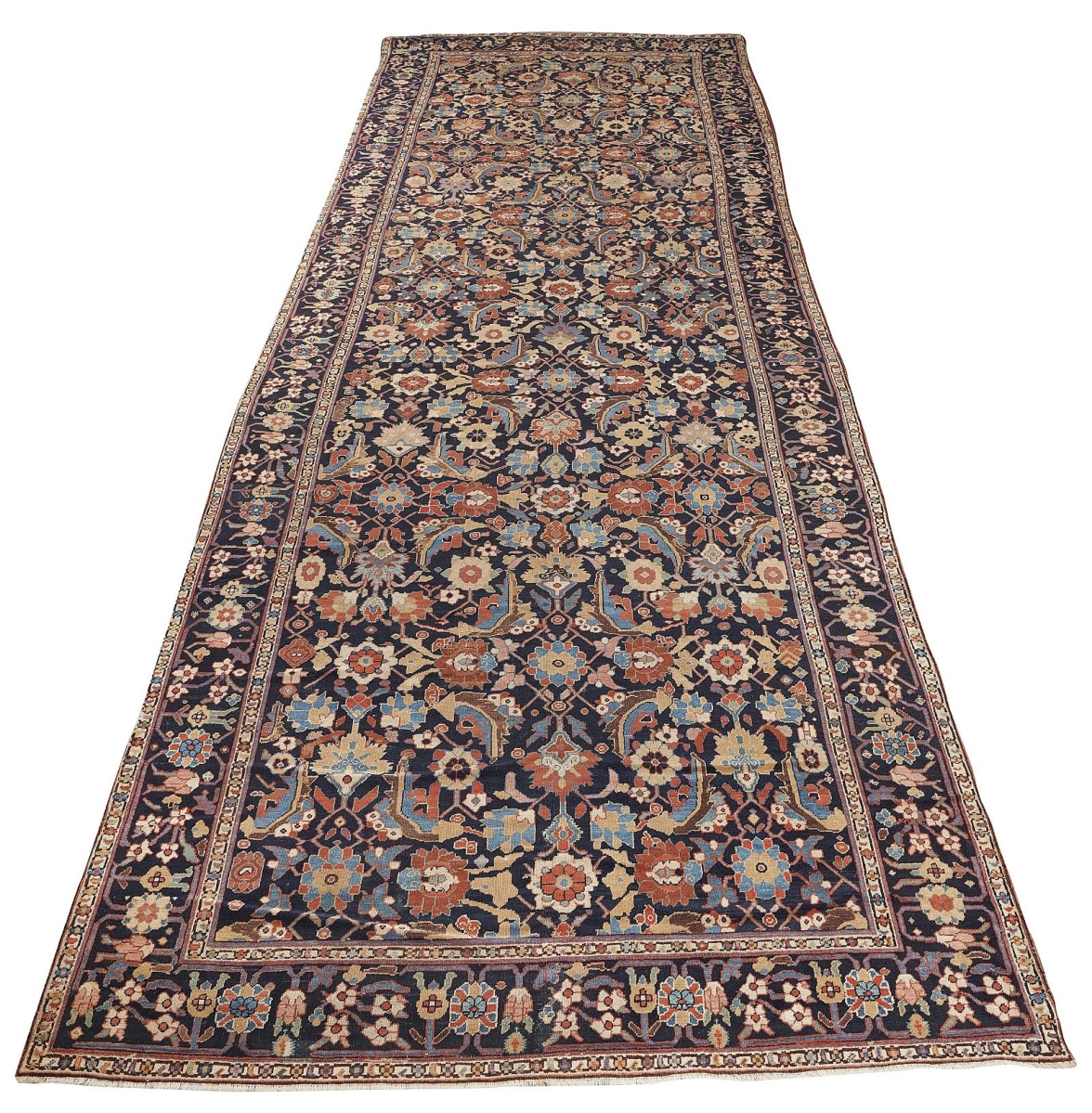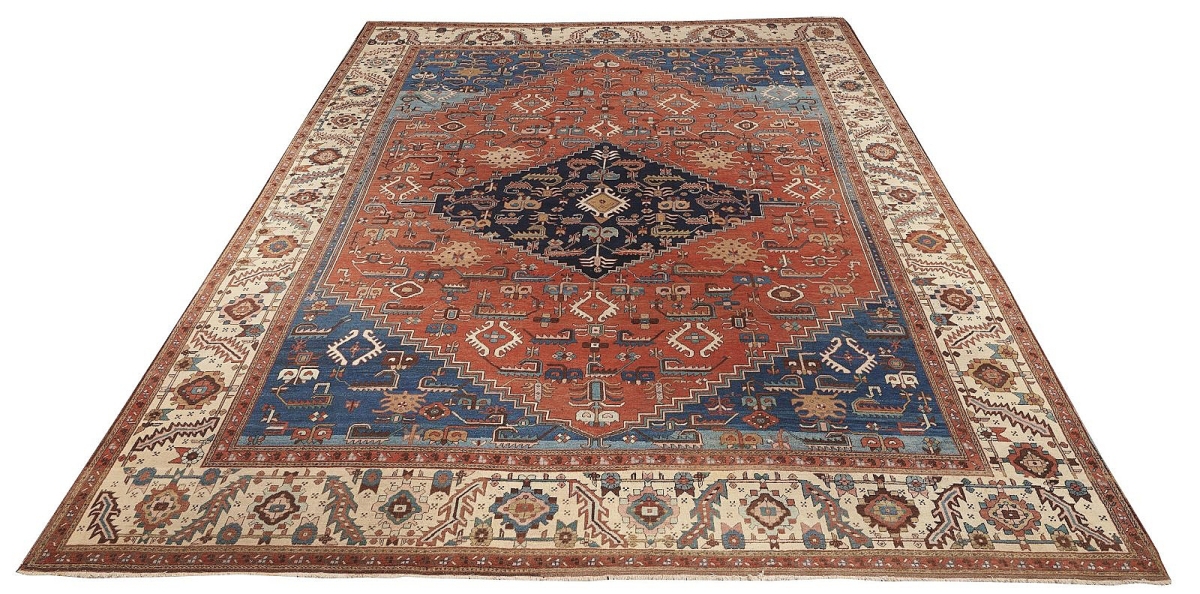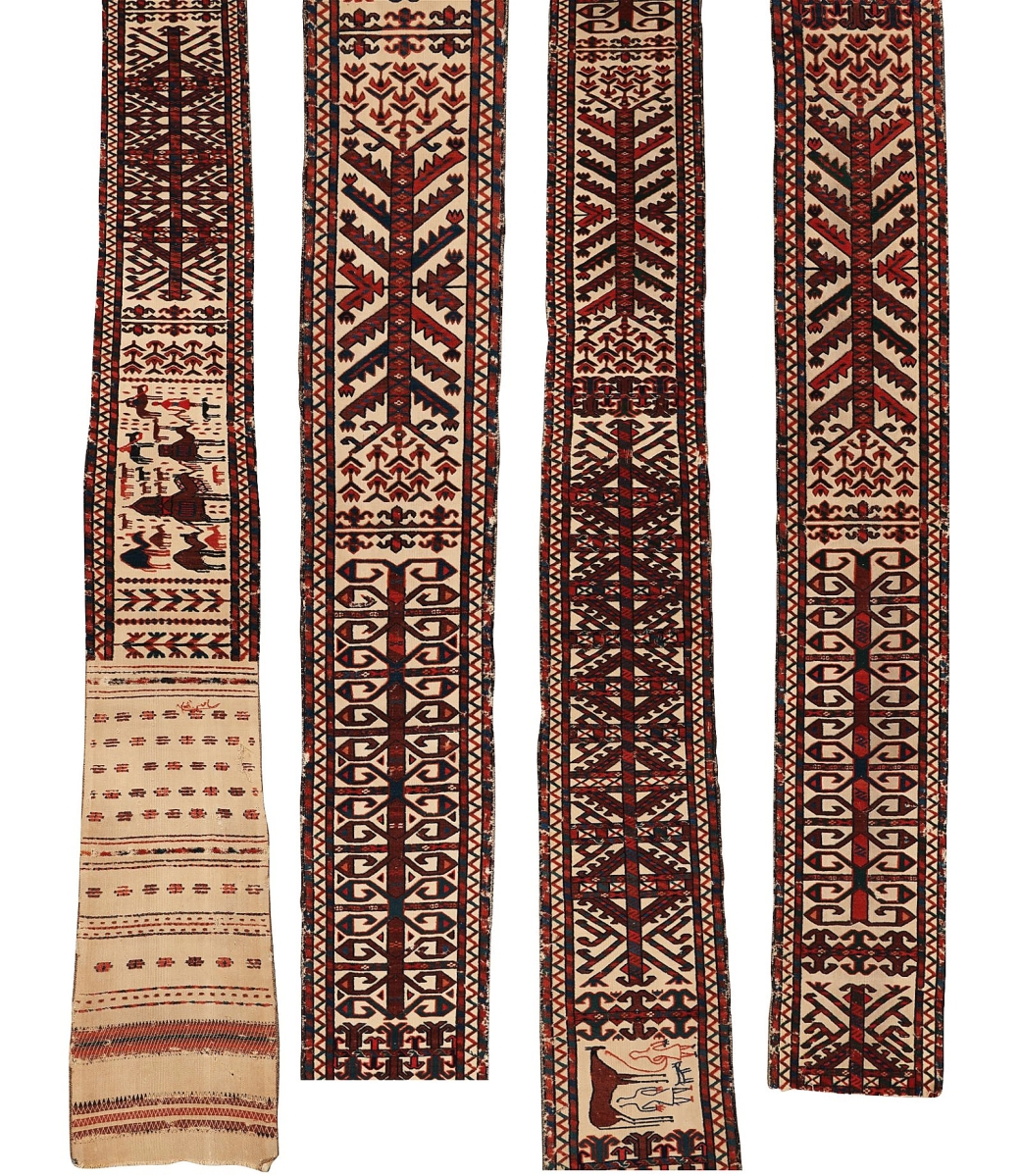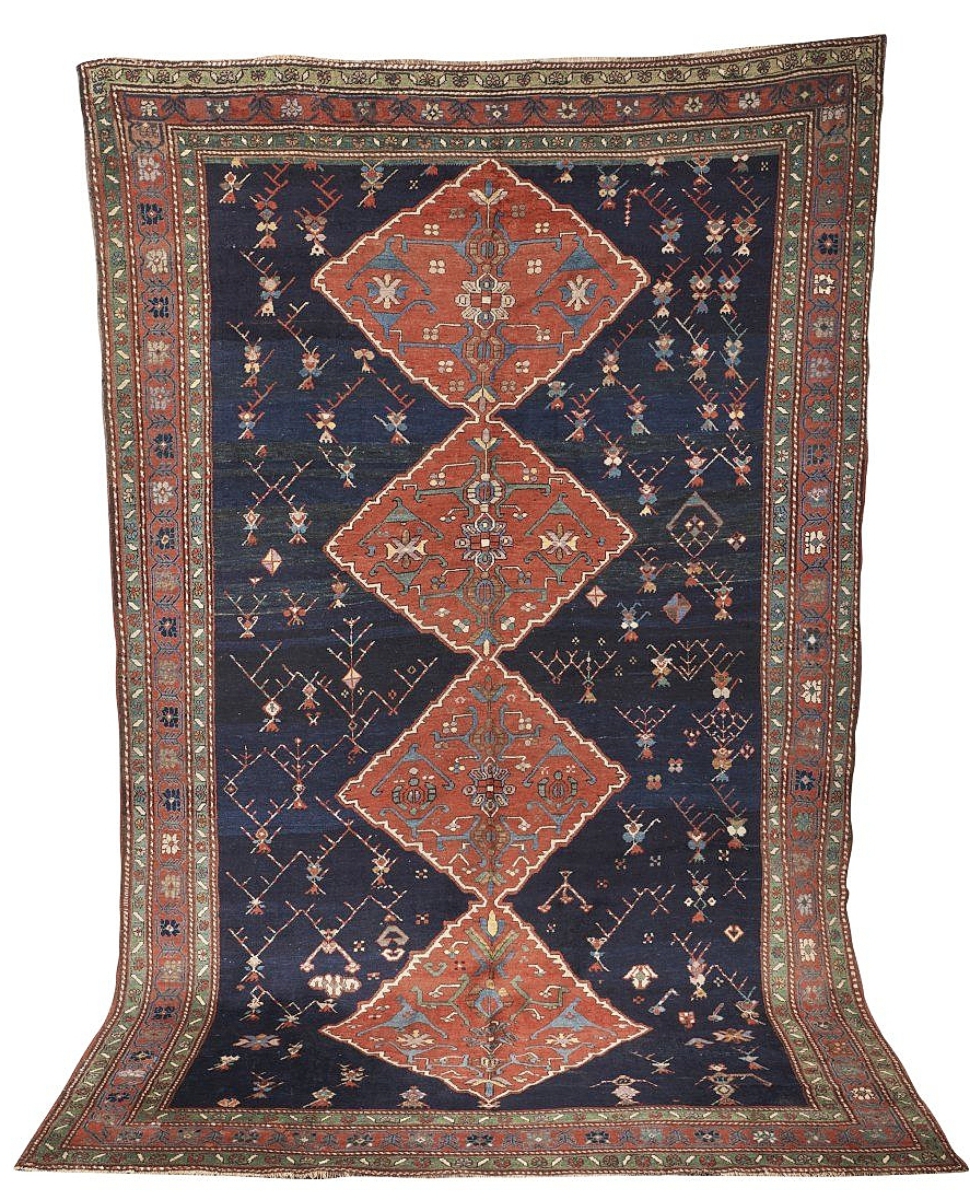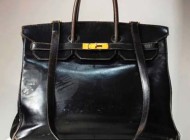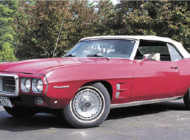
The large gallery easily displayed the more than 150 rug and carpets in the sale.
Review and Onsite Photos by Rick Russack, Additional Photos Courtesy Grogan & Company
BOSTON – Grogan & Company’s Oriental rug and carpet sale was conducted on June 12 and did well. Michael Grogan spent ten years at Sotheby’s, part of that time as head of the Oriental carpets department, and when he left in 1987, he was a vice president of the firm. Well known for his expertise in the field, his firm conducts an annual sale of rugs and carpets, as well as three or four sales a year of paintings, jewelry and decorative arts. This sale included 35 rugs from the Peter Tillou collection, which grossed $207,312, as well as the Dr Douglas M. and Nelda K. Lay collection and material from other consignors. The entire sale totaled $472,000 with about 20 rugs failing to sell.
The top price of the day, $28,750, was earned by a Persian Serapi carpet dating to the last quarter of the Nineteenth Century. It was slightly larger than 10 feet by 9 feet. In an unusual presale email, Grogan included comments by department heads and other staff members about their favorite rugs, from a personal point of view, regardless of the value of the rug. Georgina Winthrop, vice president and director of fine arts, selected this rug, saying, “I was instantly drawn to this striking Serapi carpet. The unusual ivory field is complemented by the all-over pattern of meandering shrimp pink and robin’s egg blue leaves. This is a complex and lyrical rug that would serve as a warm base for any living room.” Bidders apparently agreed with her assessment as the price achieved was close to three times the estimate.
A rug chosen by another staff member, Eliza Hodgson, research and marketing coordinator, also finished nearly three times over the estimate. She chose a circa 1900 Shirvan rug, 7 feet by 2½ feet, that finished at $8,750. Her comment, “The rich colors and charming detail set this Shirvan rug apart. My eye was initially drawn to the green of the central medallion and was further captivated by the horses, birds, camels and figures anchoring the field. The playful border and scale complete the piece, rendering this rug a perfect addition to any room or collection.” Perhaps since rugs are a major decorative component of a home, comments such as these, from “non-professionals” encourage bidding. While we’re on the subject of “staff favorites,” the rug that Michael Grogan selected, a late Nineteenth Century Talish rug from the Caucasus region sold for $11,250, almost double the high estimate. It was part of the Tillou collection. Grogan had commented in the email, “One rug that is my favorite? What a nearly impossible assignment! I’ll choose this Talish for several reasons. First, it belonged to Peter Tillou. I had great respect and admiration for Peter over the years, and his knowledge was only matched by his kindness. Peter’s Talish is plain and simply pretty! It is not a rug collectors’ rug, per se, though it is about as cheerful, colorful and tactile as a good Caucasian rug gets. Bravo, Peter!”

Surprising all, the second highest price of the sale, $28,125, was earned by a 15-foot-long, circa 1875 Kuba corridor carpet from the Caucasus. It was from the Tillou collection.
Grogan was not alone for his respect for the Tillou collection, as many rugs from that collection sold well over estimates, as these examples will show. The late Peter Tillou was a well-respected antiques dealer, collector and scholar. One of his rugs brought the second highest price of the sale, $28,125. It was a circa 1875 Kuba corridor carpet from the Caucasus. It was 15 feet by 4½ feet. Rugs from this nearly inaccessible area were made with natural dyes well into the Twentieth Century and tended to be made for personal use, as opposed to being made for the commercial market. This particular rug was woven with a colorful, overall floral design. Earning $18,750 was a large Persian Serapi carpet, also dating to the last quarter of the Nineteenth Century. It was 15 feet by 11 feet 9 inches. Another of Tillou’s rugs that exceeded expectations was a circa 1875 yellow ground Kuba from the Caucasus region. It was 5 feet 6 inches by 4 feet and brought $16,250.
A few days after the sale, Jeff Tillou, Peter’s son, said that his father had assembled this collection from about 1992 on. “The long Kuba corridor rug was a nice surprise, and I think that the sale went well. I’ve no regrets with the way Grogan handled the sale. They did a great job.”
There were numerous other rugs, especially prayer rugs, that drew strong interest. A fine circa 1875 Marasalli prayer rug from the Shirvan area of the Caucasus realized $20,000. It’s discussed in the 1911 The Practical Handbook of Oriental Carpets. A restored Turkish Ladik prayer rug from the Lay collection, dating to the early Nineteenth Century, reached $7,500, and a Turkish Mujar prayer rug realized $6,250. The term Mujar refers to rugs woven in Mucur, a village in central Turkey.

Another of the Turkish prayer rugs, reflecting the increased interest in rugs from that area, this one realized $5,625. It dated to the mid-Nineteenth Century.
Grogan’s is an interesting company, doing things that many other auction houses do not. When hiring new staff members, the firm seeks individuals who have demonstrated accomplishments in other fields and then promotes from within, paying for continuing, specialized education. Taylor See, jewelry department director, is a good example. Seven years ago, she was hired to work on the front desk, directly after graduating with a degree in fashion merchandising. She had no direct experience in the art or jewelry fields that Grogan specializes in but was a nationally rated equestrian during her college years. She had an interest in jewelry, which she expressed to Grogan. Since that time, she has completed coursework in diamonds and colored stones at the Gemological Institute of America and is currently working toward her graduate gemologist degree. She is also certified USPAP (Uniform Standards of Professional Appraisal Practice). All this training was at company expense.
After the sale, Michael Grogan noted, “We finished with more than $470,000, close to our high estimate for the sale. The Tillou collection did far better than we thought. The provenance associated with those rugs helped and there were some unusual ones, like the yellow Kuba. We also saw increased interest in Turkish rugs and I was glad to see that we sold some overseas. The highest priced rug of the day went to a London dealer and others went to various parts of this country. For the 132 rugs that sold, there were 69 different buyers. The overall market is recovering from the doldrums of a few years ago, and I think that more American home owners are seeing the value in these rugs, so much more interesting than some of the new rugs being offered.”
Prices given include the buyer’s premium as stated by the auction house. For information, www.groganco.com or 617-720-2020.



